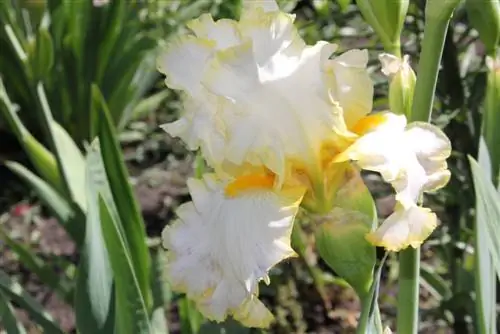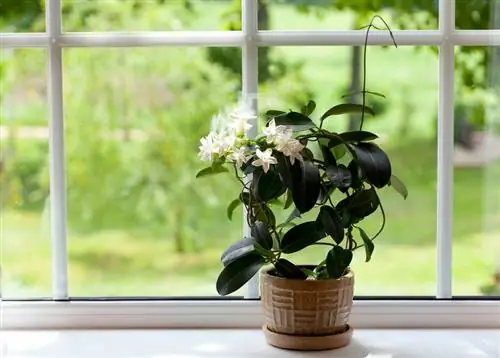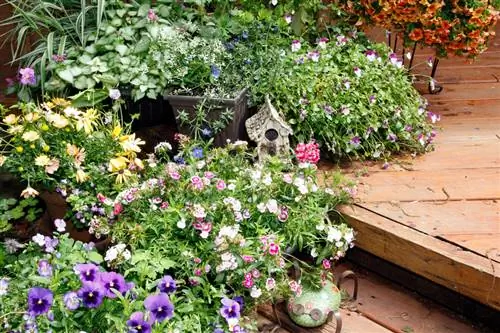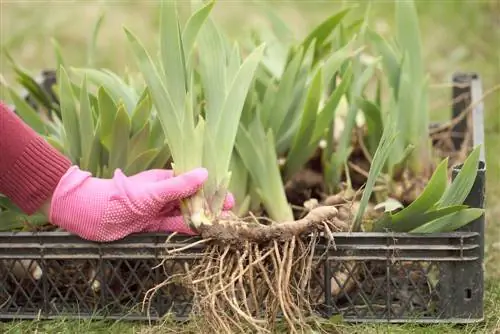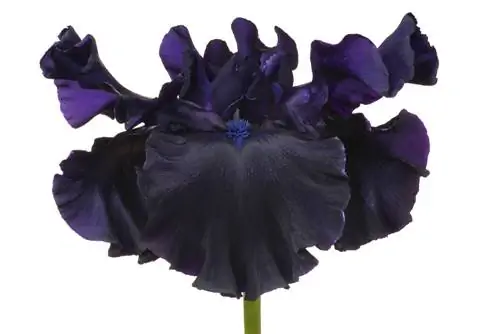- Author admin [email protected].
- Public 2023-12-16 16:46.
- Last modified 2025-01-23 11:21.
Since the different varieties of bearded iris have different location requirements, you should take a closer look at the information on the plant variety before planting. One thing the various bearded iris varieties have in common is that they can be divided relatively easily and can therefore be propagated and rejuvenated.
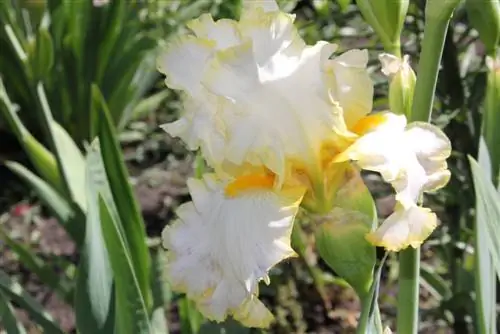
How do you properly care for a bearded iris?
The optimal care of a bearded iris includes selecting a suitable location, sufficient watering, regular fertilization and, if necessary, digging and dividing for rejuvenation. Pests and diseases should be identified and treated early.
How often should a bearded iris be watered?
If a bearded iris is planted outdoors, it usually does not necessarily need additional watering. However, care should be taken to select the correct variety before planting. While the Japanese iris can thrive in moist soil, the dwarf bearded iris feels at home in a dry location in the rock garden.
What should you consider when transplanting a bearded iris?
Basically, planting or transplanting should be carried out in such a way that the roots do not air dry for too long. Many bearded iris varieties thrive particularly well in deep, permeable soil. If slow-flowering specimens are transplanted for rejuvenation, the roots and leaves should be shortened. After planting, you should water the plants well so that the roots are well surrounded by the soil. Most bearded iris varieties love sunny locations where they are not too crowded by other plants.
When and how can a bearded iris be cut?
The flowers or leaves of the bearded iris do not necessarily need to be cut. However, it can happen that the bearded iris becomes lazy to bloom after several years in one location. Then the rhizomes are carefully dug up and divided in late summer or after flowering:
- cut off old rhizome parts
- divide young rhizomes into several pieces
- also shorten the leaves significantly for renewed growth
What pests can harm a bearded iris?
With some iris varieties, snails or voles can become a problem, which can be counteracted using standard commercial methods. Severe aphid infestations can be washed off with a sharp jet of water or combated with beneficial insects.
How can the bearded iris be protected from diseases?
With regular fertilization and a suitable location, plant he alth is usually strengthened so that diseases rarely occur. If viral diseases actually occur, infected plants should be removed quickly and disposed of with organic waste.
How is a bearded iris optimally fertilized?
When planting new bearded iris varieties, the soil can be enriched with mature compost as a long-term fertilizer. Large-flowered varieties should then be provided with additional mineral fertilizer at least once a year in spring.
What should you consider when overwintering a bearded iris?
In the outdoor bed, the bearded iris does not need any special winter protection, but specimens in the pot should, if possible, be positioned under a rain cover, otherwise there is a risk of moisture damage.
Tip
The most important thing when caring for a bearded iris is to choose a location that suits the respective variety.

